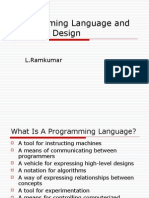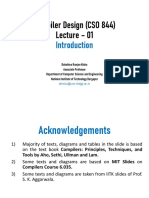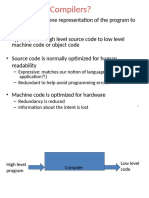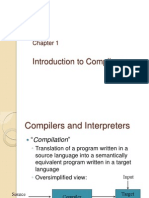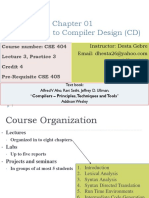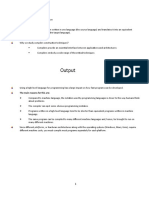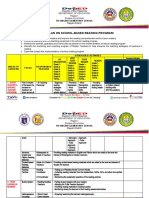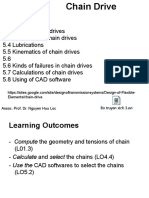0% found this document useful (0 votes)
60 views55 pagesCompiler Design 1
The document outlines a course on compiler design, detailing its objectives, coverage, and phases of compilation. It emphasizes the principles of compiler construction, including lexical analysis, syntax analysis, intermediate code generation, and optimization techniques. Reference texts and programming paradigms are also discussed, highlighting the evolution and importance of programming languages.
Uploaded by
tibit40784Copyright
© © All Rights Reserved
We take content rights seriously. If you suspect this is your content, claim it here.
Available Formats
Download as PDF, TXT or read online on Scribd
0% found this document useful (0 votes)
60 views55 pagesCompiler Design 1
The document outlines a course on compiler design, detailing its objectives, coverage, and phases of compilation. It emphasizes the principles of compiler construction, including lexical analysis, syntax analysis, intermediate code generation, and optimization techniques. Reference texts and programming paradigms are also discussed, highlighting the evolution and importance of programming languages.
Uploaded by
tibit40784Copyright
© © All Rights Reserved
We take content rights seriously. If you suspect this is your content, claim it here.
Available Formats
Download as PDF, TXT or read online on Scribd
/ 55


